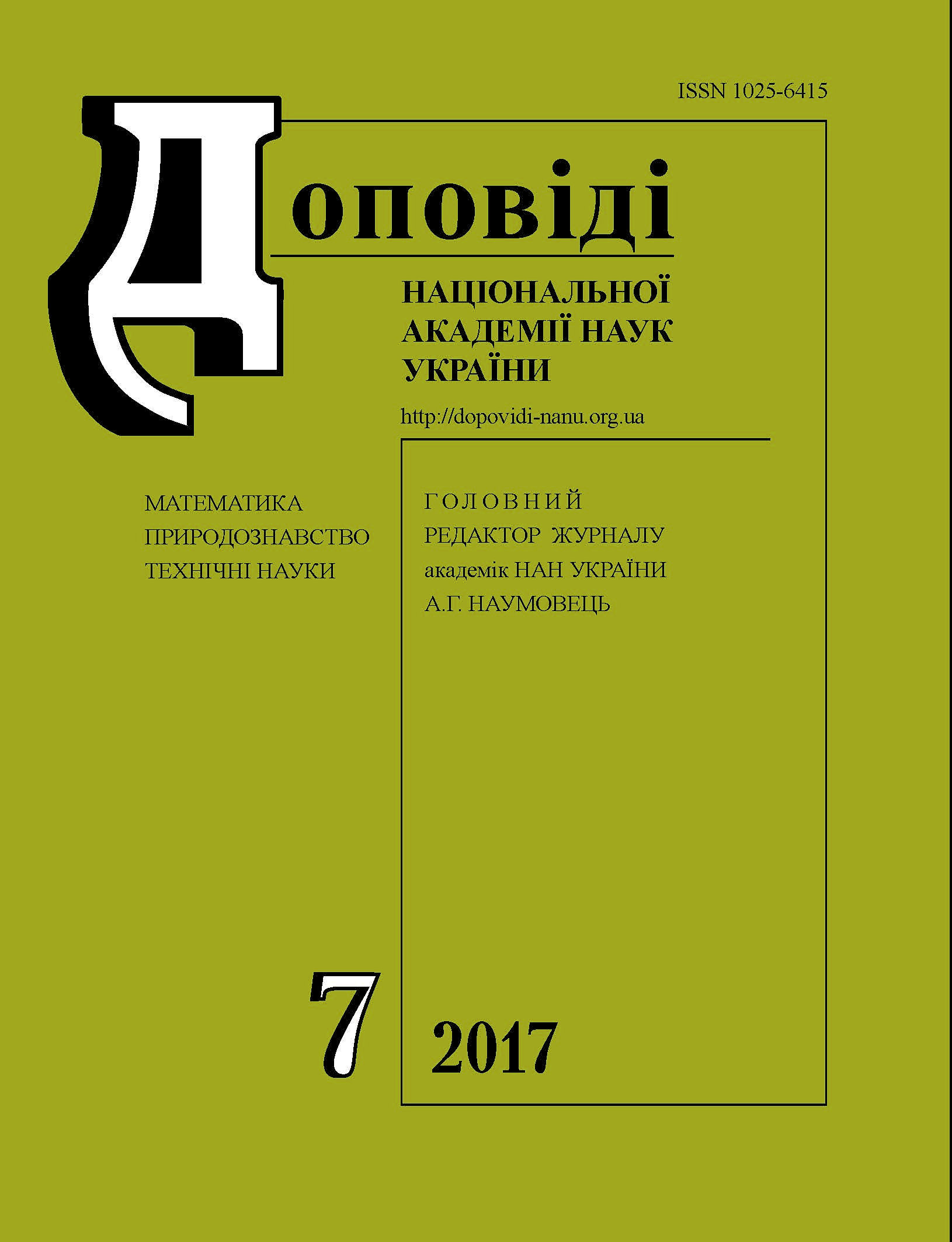Адаптивна стратегія галофітів Polygonum maritimum і Euphorbia paralias
DOI:
https://doi.org/10.15407/dopovidi2017.07.098Ключові слова:
Euphorbia paralias L., Polygonum maritimum L., ліпіди, мікроструктура, фітогормони, фотосинтетичні пігментиАнотація
Проведено порівняння мікроструктури листкової поверхні, пігментного спектра, вмісту фітогормонів і складу ліпідів у галофітів з різною метаболічною і фізіологічною стратегіями адаптації до засолення Polygonum maritimum L. та Euphorbia paralias L., які зростали у природних умовах на дюнах Поморійського озера (Болгарія). У P. maritimum продихи знаходяться по обидва боки листка нижче рівня кутикули, тоді як у E. paralias — лише на абаксіальному боці й оточені складками кутикули. Значна кількість каротиноїдів (порівняно з хлорофілами) у листках P. maritimum указує на те, що ці пігменти виконують світлозбиральну функцію і можуть передавати додаткову енергію на хлорофіли. У листках E. paralias і P. maritimum переважають вільна абсцизова кислота і кон’югована індоліл-3-оцтова кислота. Неактивні цитокініни (цисзеатин і зеатин-О-глюкозид) домінують у листках E. paralias, тоді як у листках P. maritimum міститься значна кількість ізопентенільних форм цитокінінів. Наявність великої концентрації насичених жирних кислот забезпечує зменшення проникності мембран і кращу солестійкість. Зроблено висновок, що екологічна стратегія галофітів поєднує комплекс структурних та функціональних пристосувань і визначає успішне існування в умовах засолення.
Завантаження
Посилання
Ashraf, M. & Harris, P. J. C. (2013). Photosynthesis under stressful environments: An overview. Photosynthetica, 51, pp. 163-190. https://doi.org/10.1007/s11099-013-0021-6
Stetsenko, L. A., Vedenicheva, N. P., Likhnevsky, R. V. & Kuznetsov, Vl.V. (2015). Influence of abscisic acid and fluridone on the content of phytohormones and polyamines and the level of oxidative stress in plants of Mesembryanthemum crystallinum L. under salinity. Biol. Bull., 42, pp. 98-107. https://doi.org/10.1134/S1062359015020107
Ivanova, A., Khozin-Goldberg, I., Kamenarska, Z., Nechev, J., Cohen, Z., Popov, S. & Stefanov, K. (2003). Lipophylic compounds from Euphorbia peplis L. — a halophytic plant from the Bulgarian Black Sea coast. Z. Naturforsch., 58, pp. 783-788. https://doi.org/10.1515/znc-2003-11-1205
Wellburn, A. J. (1994). The spectral determination of chlorophyll a and chlorophyll b, as well as total carotenoids, using various solvents with spectrophotometers of different resolution. Plant Physiol., 144, pp. 307-313. https://doi.org/10.1016/S0176-1617(11)81192-2
Christie, W. W. (1989). Gas Chromatography and Lipids: a Practical Guide. Ayr, Scotland: Oily Press.
Musatenko, L., Vedenicheva, N., Vasyuk, V., Generalova, V., Martyn, G. & Sytnik, K. (2003). Phytohormones
in seedlings of maize hybrids differing in their tolerance to high temperatures. Russ. J. Plant Physiol., 50, pp. 499-504. doi: https://doi.org/10.1023/A:1024704303406
Evert, R. F., Eichhorn, S. E. & Raven, P. H. (2013). Raven Biology of Plants. 8 ed. New York: Freeman.
Ivanova, A. P., Tsonev, T. D., Peeva, V. N., Najdenski, H. M., Tsvetkova, I. V., Babenko, L. M., Shcherbatiuk, M.M., Sheiko, O. A. & Kosakivska, I. V. (2015). Euhalophyte Eryngium maritimum L.: the microstructure and functional characteristics. J. Stress Physiol. Biochem., 11, pp. 52-61.
Babenko, L. M., Kosakivska, I. V., Akimov, Yu. A., Klymchuk, D. O. & Skaternaya, T. D. (2014). Effect of temperature stresses on pigment sontent, lipoxygenase activity and cell ultrastructure of winter wheat seedlings. Genetics and Plant Physiol., 4, pp. 117-125.
Nisar, N., Li, L., Lu, Sh., Khin, N. C. & Pogson, B. J. (2015). Carotenoid metabolism in plants. Mol. Plant, 8, pp. 68-82. https://doi.org/10.1016/j.molp.2014.12.007
Xiong, L. (2007). Abscisic acid in plant response and adaptation to drought and salt stress. In Advances in molecular breeding toward drought and salt tolerant crops (pp. 193-221). Berlin: Springer. https://doi.org/10.1007/978-1-4020-5578-2_9
Vedenicheva, N. P., Voytenko, L. V., Musatenko, L. I., Stetsenko, L. A. & Sheviakova, N. I. (2011). Changes of phytohormones content in halo- and glycophytes under salinity. Studia Biol., 5, pp. 37-44.
Talla, S. K., Panigrahy, M., Kappara, S., Nirosha, P. & Neelamraju, S. (2016). Cytokinin delays dark-induced senescence in rice by maintaining the chlorophyll cycle and photosynthetic complexes. J. Exp. Bot., 67, pp. 1839-1851. https://doi.org/10.1093/jxb/erv575
Mansour, M. M. F., Salama, K. A. & Al-Mutawa, M. M. (2002). Effects of NaCl and polyamines on plasma membrane lipids of wheat roots. Biol. Plant., 45, pp. 235-239. https://doi.org/10.1023/A:1015144607333
Rodriguez-Rosales, M. P., Kerbek, L. & Bueno, P. (1999). Changes induced by NaCl in lipid content and composition, lipoxygenase, plasma membrane H+–ATPase and antioxidant enzyme activities of tomato (Lycopersicon esculentum Mill) calli. Plant Sci., 143, pp. 143-150. https://doi.org/10.1016/S0168-9452(99)00046-1
##submission.downloads##
Опубліковано
Як цитувати
Номер
Розділ
Ліцензія
Авторське право (c) 2024 Доповіді Національної академії наук України

Ця робота ліцензується відповідно до Creative Commons Attribution-NonCommercial 4.0 International License.



